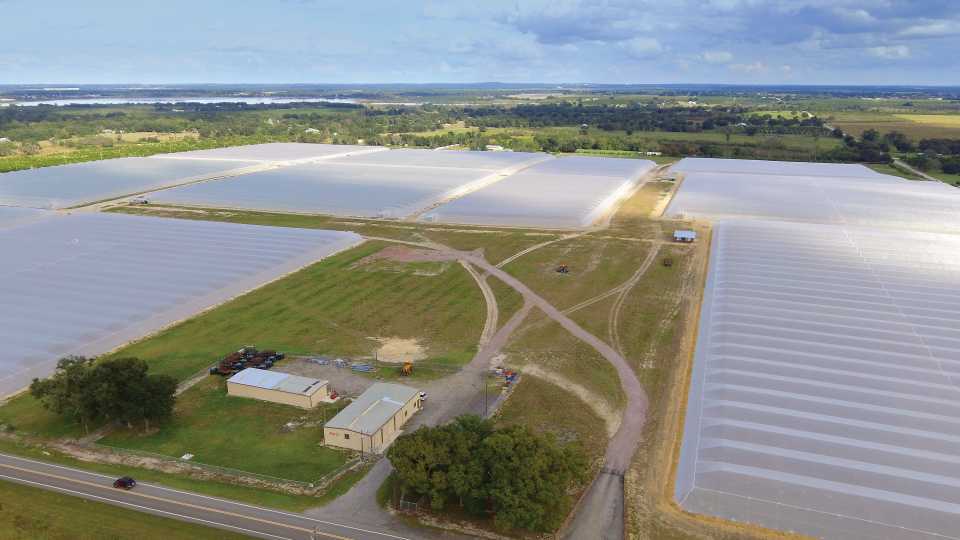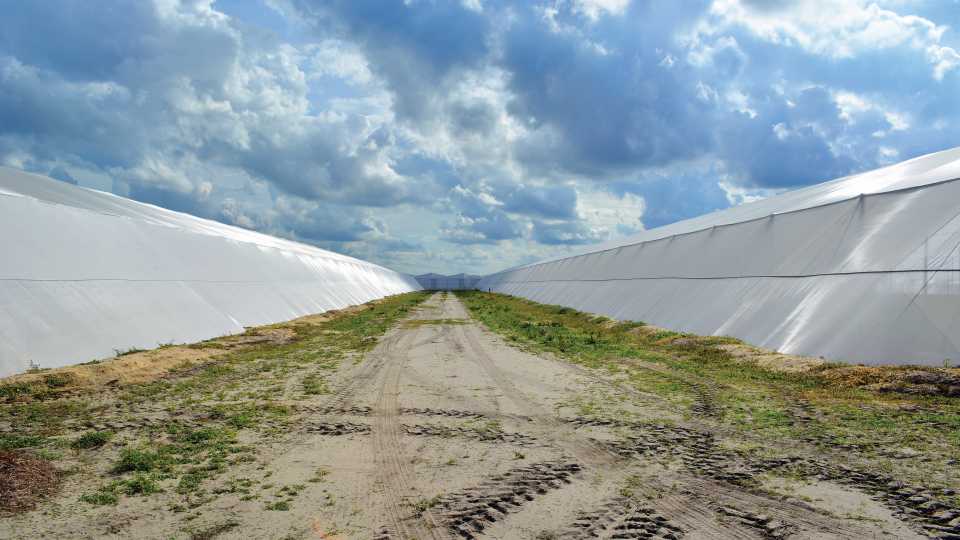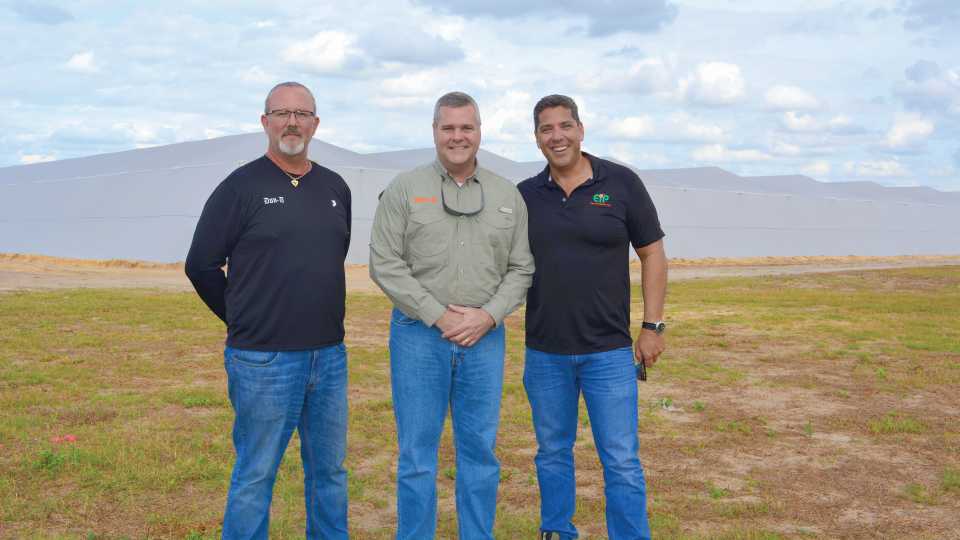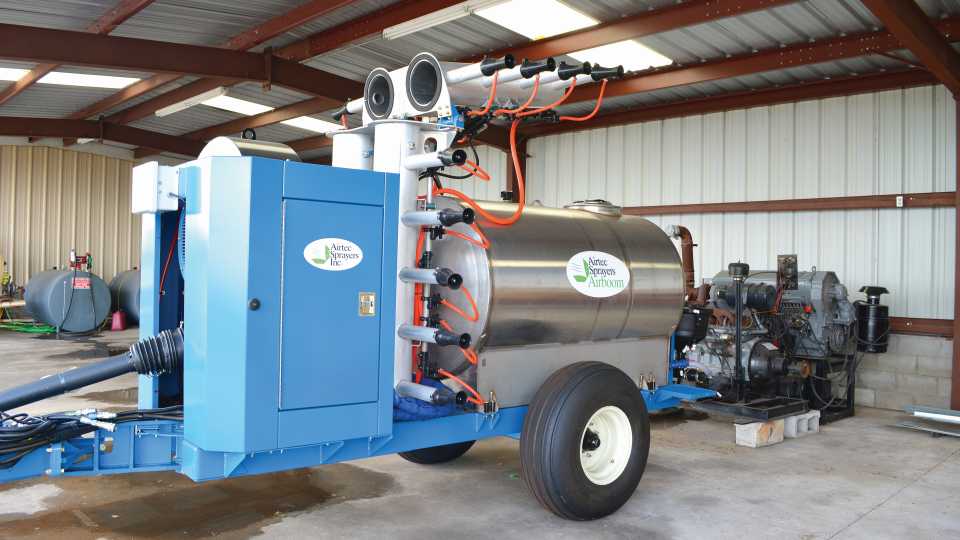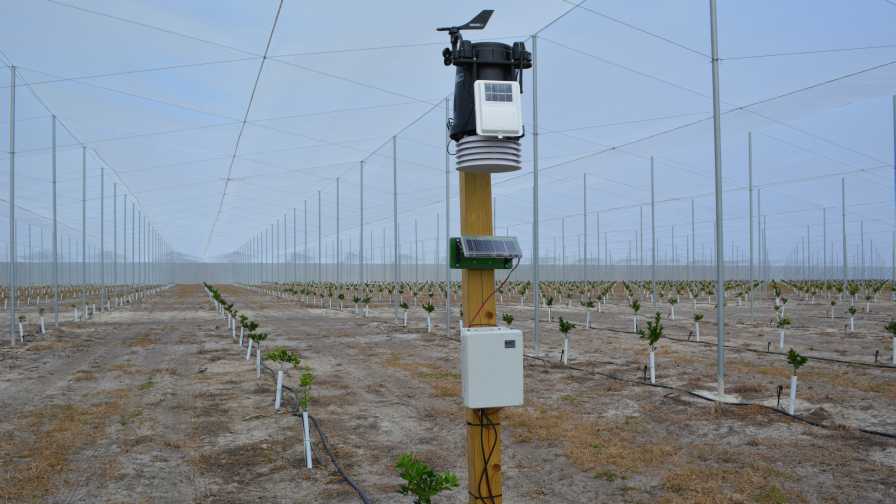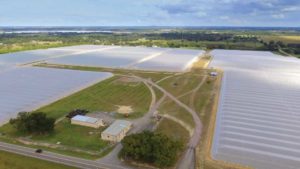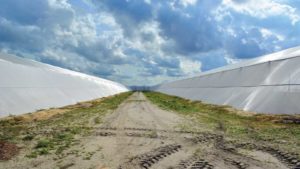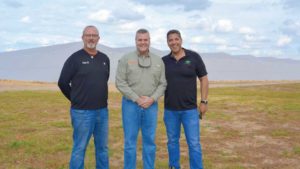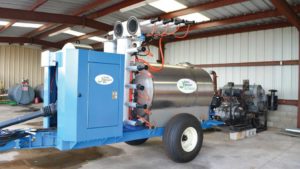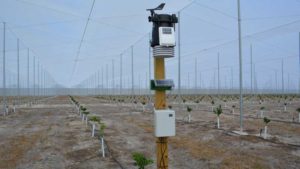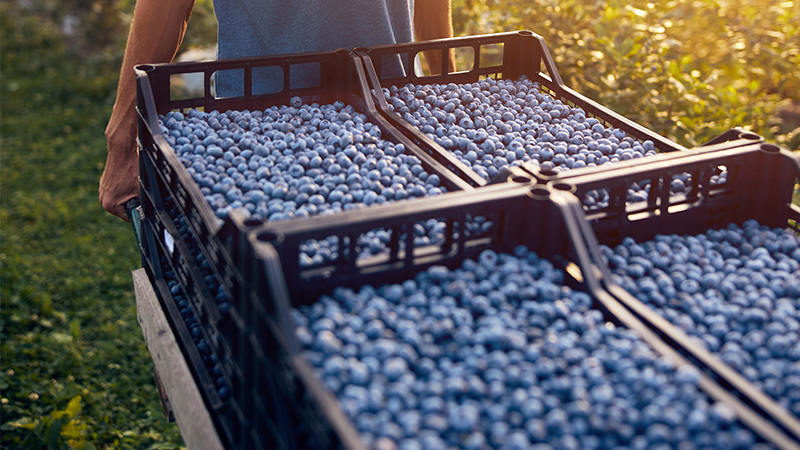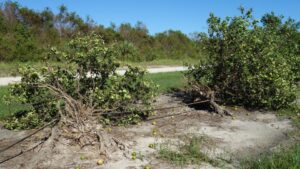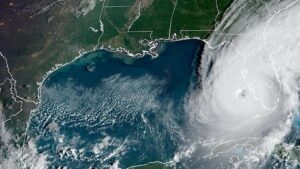Growing Under Cover a Big Deal for Florida Citrus

Growers of fresh and processed citrus have struggled with volume and quality ever since HLB became entrenched in groves across Florida. Since then, all manner of tactics have been deployed to achieve better fruit and yield.
One of those measures is planting citrus under protective screen (CUPS), utilizing advanced production management to increase efficiency and bolster growth. CUPS aims to exclude the Asian citrus psyllid (ACP) and, therefore, keep out HLB. A number of structures have been put up across the state as more interest grows in the approach.
Consistency Upgrade
Dundee Citrus Growers Association has decided to give CUPS a try in a big way — along with 10 of its grower members — with a planting of 110 acres under screen near Bartow. There are 10, 11-acre structures on the property, known as “The Hill” in Polk County, because of its high elevation.
Founded in 1924, the cooperative has grown into one of the largest packer/shippers of fresh fruit in Florida. And like everyone else, it is seeking solutions to HLB. One of those solutions is CUPS, and after nearly four years of study and development, the first trees were planted in the structure this month.
“Our main goal with this project is to bring more consistency in the volume and quality of the fruit we pack and ship,” says Steven Callaham, CEO of Dundee Citrus Growers Association. “We have great demand from our buyers, so it is important that we continue growing our volume. One year we tell them [buyers] that we are off because of postbloom fruit drop, and the next it is a hurricane, along with the negative effects of HLB,” Callaham says.
“With CUPS, we are bringing a positive message. It is a morale booster for our members and our employees because of the volume and quality of fruit we plan to produce with CUPS. It will benefit everyone in our cooperative. When buyers come to visit the facility, they get excited,” he says.
Team members at Dundee who worked to develop the project believe extremely tight production and harvesting protocols will be necessary to achieve the goals of keeping out the ACP and producing high-volume, high-quality fruit. That’s why their business model will differ from an individual grower putting up a structure.
“We had a great deal of interest among our grower-members when the CUPS concept first started being discussed by the industry,” Callaham says. “As we learned more, the idea of one of our growers putting up a 10-acre structure on their farm and another grower here and another grower there, we realized that scenario would be very difficult to manage. That is where the concept of the centrally located CUPS complex began to take form.”
Beyond quality control, the larger planting takes advantage of economies of scale. CUPS requires very specialized equipment such as vineyard-type tractors, custom spraying equipment, high-tech irrigation/fertigation systems, and general structure upkeep. Spreading those costs over multiple acres helps with the initial upfront investments, which are large.
“This is going to be a vertical, turnkey operation,” says Justin Martin, who will manage production at the Dundee CUPS complex. “That is good for outside investors who might not be familiar with citrus, but it also is good for growers who need to continue to manage their outside groves. We will take care of all the specialized production in the CUPS.”
Martin says they are relying on the pioneering CUPS research of Arnold Schumann, a Professor of soil and water quality with UF/IFAS. Schumann has been studying CUPS in a 1.3-acre structure he had constructed in 2014 at the Citrus Research and Education Center in Lake Alfred. The research was initiated primarily to gauge the structure’s ability to exclude the ACP and HLB. The research also has shown the high-yield and high-quality packout resulting from the practice.
“In our trials, we anticipate plateau yields in the 800 to 1,000 boxes per acre range depending on the rootstocks, varieties, and growing techniques,” Schumann says.
Learning from Irma
Ed Pines, a grower and board member of the Dundee Citrus Grower Association, was among the first to build a commercial-scale, 20-acre CUPS near Lake Wales. Just as Schumann’s research predicted, ACP and HLB were held at bay, and trees were growing rapidly under the intense management of the CUPS system.
Pines was honored with the 2017 Florida Grower Citrus Achievement Award for his positive attitude about the future of the state’s citrus industry and taking steps to test CUPS in the real world. Unfortunately, his structure happened to be right in the path of Hurricane Irma, and it was destroyed.
“We were in the right quadrant of the storm and had sustained winds of more than 110 mph,” Pines says. “From a personal perspective, it was heartbreaking to lose the structure. But, from a longer-term view, it was a learning experience that allowed us to modify the construction of the Dundee complex.”
Pines is one of the 10 growers who has a CUPS structure in the complex. He also owns and operates the engineering company EIP Citrus Management, which constructed his original structure and the Dundee complex.
“Based off what we learned from the storm, we have made engineering changes to the structures that have definitely improved the strength and design of the operation,” Pines says. “We changed the screen size, lowered the height of the structures, reinforced the perimeters of the structures, and other things to make them stronger.”
Pines says site selection is critical to ensure the success of a CUPS operation. For instance, the structure that Irma destroyed was built on land with a high water table because it was near a lake. That meant concrete pilings to reinforce the poles holding up the structure could only go to the depth of the water table. The new Dundee complex is 180 feet above sea level, allowing concrete pilings to run five feet in depth. But the site is over a great source of groundwater, making for the best of both worlds.
Product of Distinction
All the work to develop the Dundee complex will culminate in what the association dubs a “product of distinction” with its first commercial harvest set for fall 2020. Callaham says that distinction will encompass several things.
For CUPS growers, it will mean a sustainable yielding crop with fresh, high-quality fruit that will have enhanced external and internal value due to the protection the screen provides and the production practices being deployed.
Easy-peel, seedless varieties and red grapefruit are being planted in the new structures based off some of Schumann’s trial work. Callaham says that is what the market dictates based off the popularity of varieties like ‘Halos’ and ‘Cuties,’ so that is the type of fresh fruit Florida must grow — only better tasting. Trees will be planted in the ground to impart the sweet Florida taste at densities in excess of 300 trees per acre.
“Growing outside with HLB, we have been forced to push these trees with nutrition programs to keep them as stress free as possible,” Callaham says. “That has taken away some our traditional methods to stress trees at the right times to benefit the fruit. Under the structure, we can get back to those practices to improve color and quality. And we hope to be able to produce about four times the average yield growing outdoors now.”
Dundee also plans to market CUPS’ environmental benefits. The trees will require less chemicals, fertilizers, and water to produce big crops.
“Consumers and our buyers are seeking products with these positive environmental traits,” Pines says. “With the internet, consumers can learn more about our growing practices. We are happy about that transparency because we believe it will improve demand.”
The structures will provide a food safety benefit by excluding wildlife from the groves as well.
Phase II
For growers interested in CUPS, phase II construction of the Dundee complex will begin in 2019, adding another 110 acres of protective structures. And as Martin puts it, “We will keep building as long as growers are asking to join. And we have demand across the board for our fruit from gift, wholesale, and retail.”
Growers wanting to participate in phase II, or CUPS in general, may reach out to the Dundee Growers Citrus Association to learn more.





